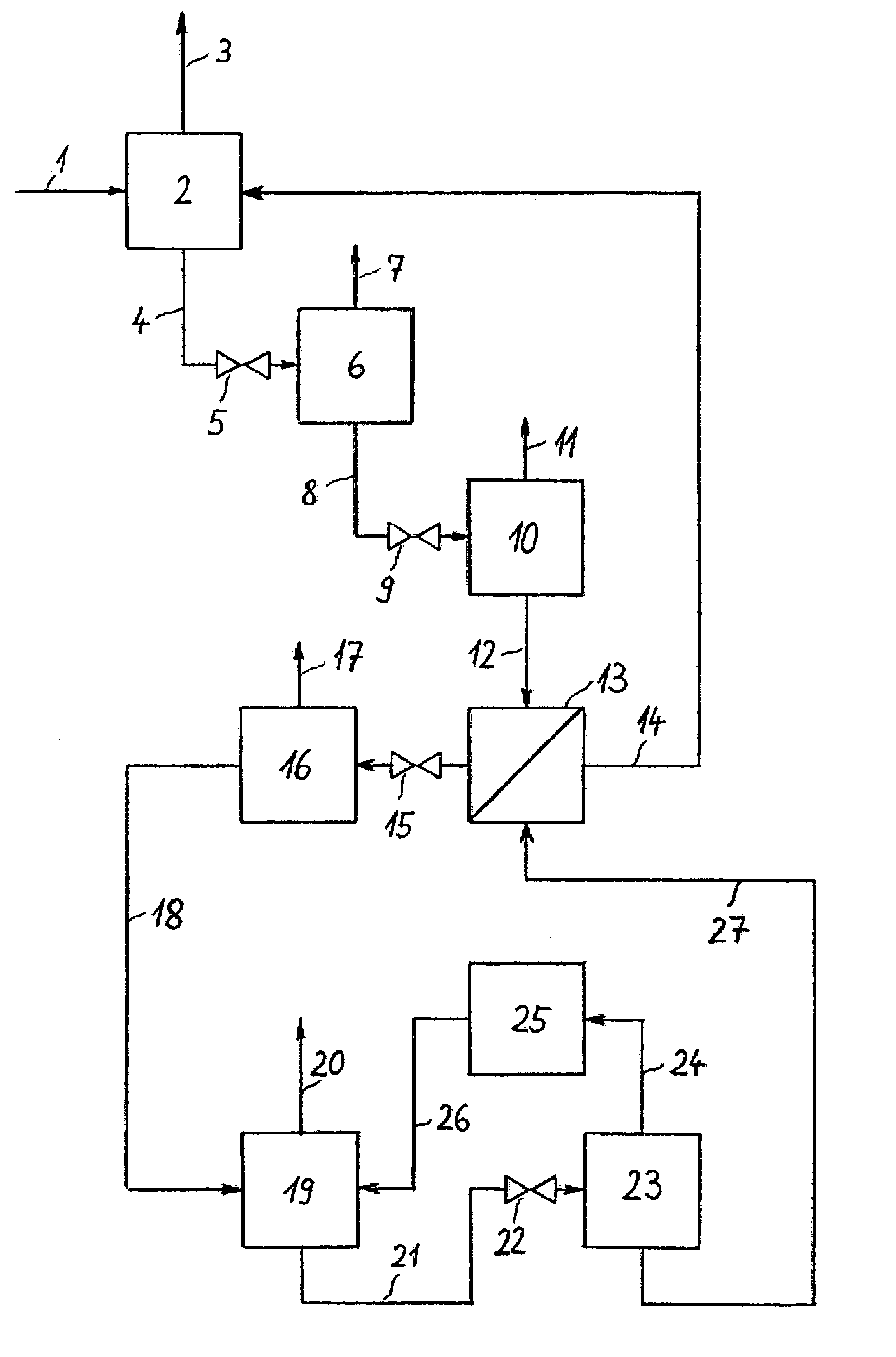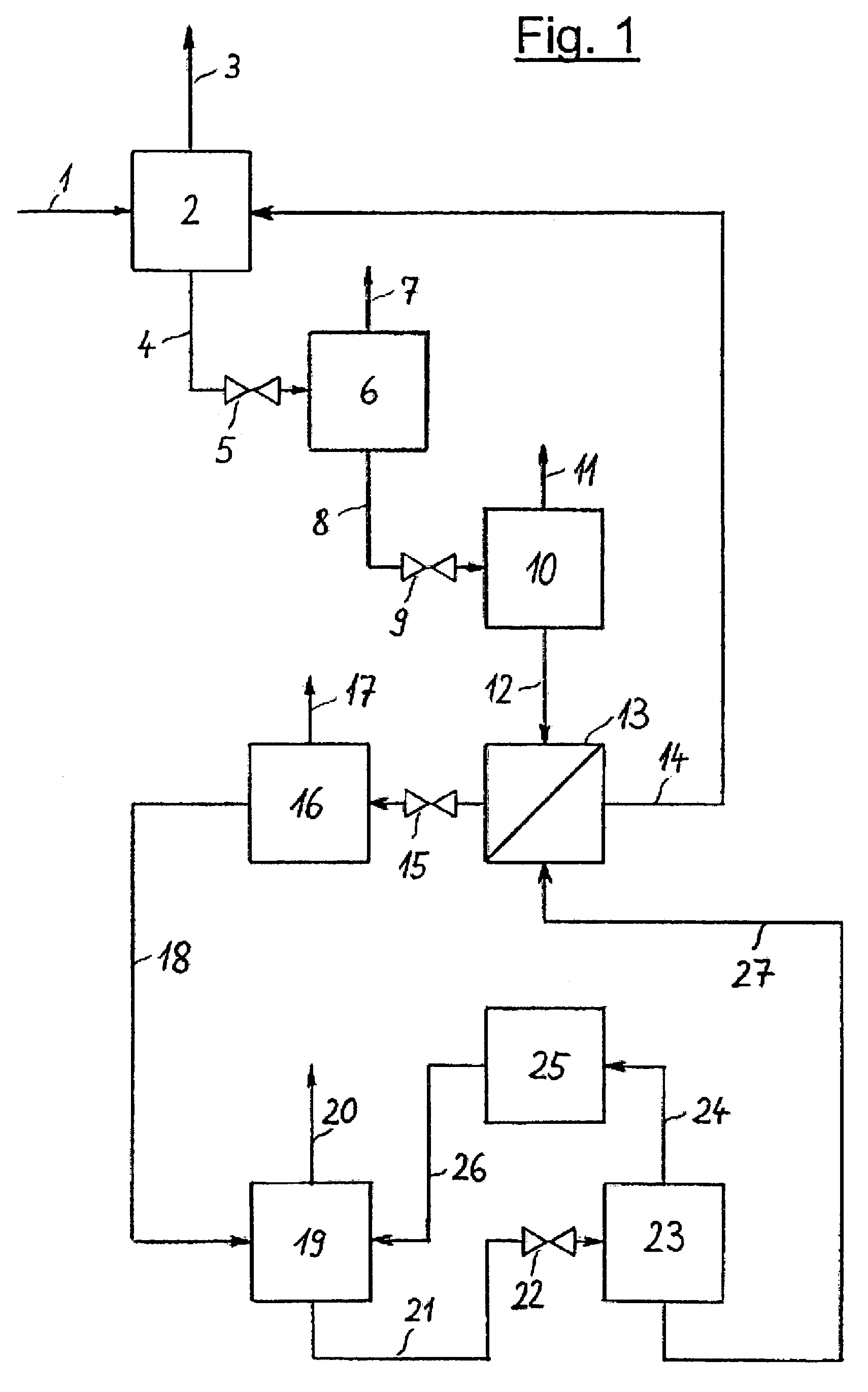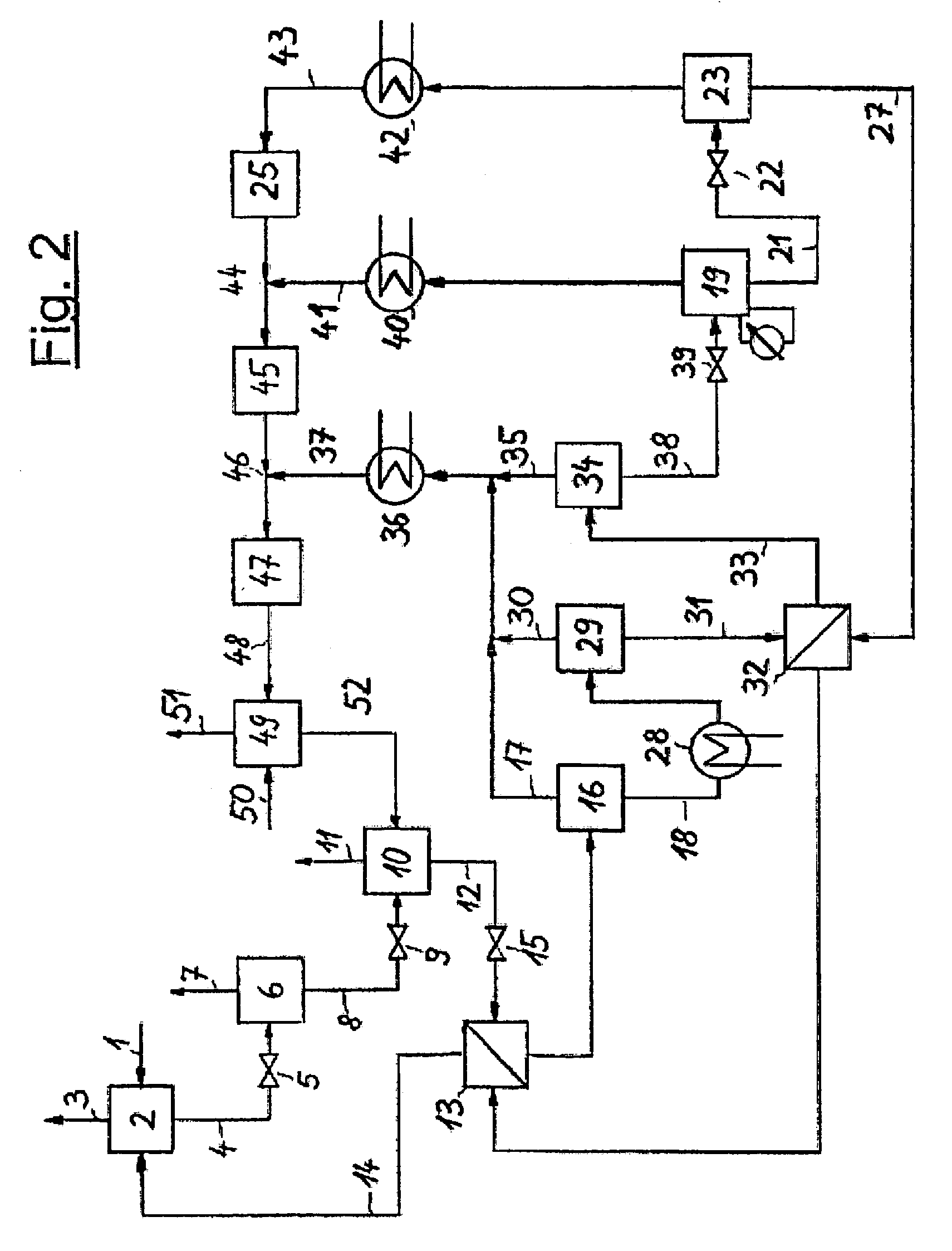Method for the absorptive outward transfer of ammonia and methane out of synthesis gas
a technology of ammonia and methane, which is applied in the field of ammonia preparation/separation, inorganic chemistry, and the use of liquid separation agents, can solve the problems of reducing the yield obtained in the reaction system, requiring a long refrigeration cycle, and reducing the operating pressure of the solvent, so as to increase the quantity of nh3 evaporated, reduce the operating pressure, and increase the operating temperature of the solvent
- Summary
- Abstract
- Description
- Claims
- Application Information
AI Technical Summary
Benefits of technology
Problems solved by technology
Method used
Image
Examples
Embodiment Construction
[0026]The invention is illustrated in the three PFDs which show a typical configuration. FIG. 1 depicts the invented process which includes an absorption step, several pressure reducing units and a regeneration system for the solvent in a multi-stage desorption. It is possible to provide various locations for NH3 absorption in the NH3 production process and, optionally, several absorption devices may be arranged in a single plant section. The representation of just one absorption step is shown in FIG. 1 and FIG. 2, hence, is to be understood that several absorption steps may exist and that the regeneration of solvent and the NH3 recovery described in this document may also be combined for all absorption steps.
[0027]NH3-rich synthesis gas 1 is fed at a pressure of approx. 180 bar (abs.) to absorption step 2 in which NH3 is absorbed by a solvent. NH3-lean synthesis gas 3 is withdrawn from absorption step 2 and piped to a downstream unit not represented in the diagram. Laden solvent 4 ...
PUM
| Property | Measurement | Unit |
|---|---|---|
| temperature | aaaaa | aaaaa |
| temperature | aaaaa | aaaaa |
| temperature | aaaaa | aaaaa |
Abstract
Description
Claims
Application Information
 Login to View More
Login to View More - R&D
- Intellectual Property
- Life Sciences
- Materials
- Tech Scout
- Unparalleled Data Quality
- Higher Quality Content
- 60% Fewer Hallucinations
Browse by: Latest US Patents, China's latest patents, Technical Efficacy Thesaurus, Application Domain, Technology Topic, Popular Technical Reports.
© 2025 PatSnap. All rights reserved.Legal|Privacy policy|Modern Slavery Act Transparency Statement|Sitemap|About US| Contact US: help@patsnap.com



